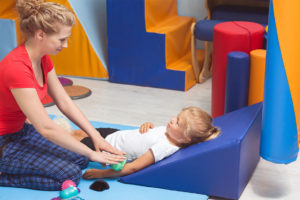Sensory Therapy for Kids with Cerebral Palsy
We take in the world via our five senses, which is something many of us take for granted. For children with cerebral palsy, sensory issues can lead to challenges that often need to be addressed sooner rather than later.

Sensory Therapy for Kids with CP
Children born with cerebral palsy may find it difficult to hold on to or grasp things due spasticity, rigidity, or paresis. They may also have problems with their sense of sight due to weak muscles around the eyes, as well as trouble hearing.
Sensory integration therapy is a form of occupational therapy that seeks to address sensory deficits in children born with cerebral palsy. It is done in a safe space with highly qualified individuals who know how to help a child with CP adapt and overcome obstacles.
Children with cerebral palsy may over-process or under-process sensory information due to central nervous system imbalances. They may engage in behavior puts them at risk of injury, or they may avoid areas and activities where they feel that their senses are being assaulted.
Sensory therapy helps the child paint a richer tapestry of their life by making it possible for them to focus on or otherwise sense things that they currently have difficulty with. In addition, it helps them deal with specific challenges and can give the child more self-confidence and a better quality of life by immersing them in the world in a more concrete and tangible way.
How Sensory Therapy Works
When it comes to sensory therapy for children with cerebral palsy, an expert will evaluate and assess the child’s level of sensitivity to an environment. This may include asking them (as well as their family) questions regarding how they respond to various situations. The main aim of this type of treatment is to discover what needs to be worked on, as well as which strategies to use in keeping with the child’s abilities.
Sensory therapy can take place anywhere the specialist sees fit. Often, the child will need to be put in different situations that will test their comfort level in a gradual manner. To this end, exercises may take place at school, in nursing centers, at their home, a hospital or doctor’s office, or at a rehabilitation center.
Sensory integration therapy aims to address the child’s emotional health, cognitive function, socialization skills, physical acuity and coordination, as well as listening and learning skills. This type of treatment will help them address challenges which may have once seemed impossible to overcome. In addition, children who go through this will develop mental fortitude to weather life’s storms growing up in a sensory-saturated world.
